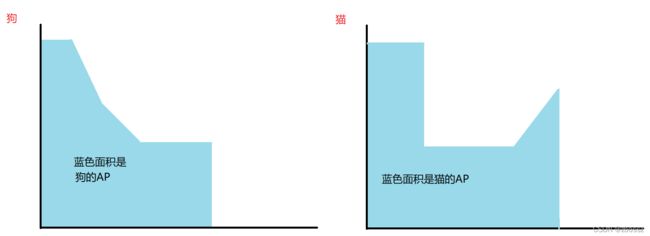- GPT-4、GPT-4O 和 GPT-4O-mini 的区别与联系
surfirst
LLMai语言模型chatgpt
简介近年来,人工智能技术飞速发展,特别是在自然语言处理领域。GPT-4是OpenAI推出的新一代大模型,而GPT-4O和GPT-4O-mini是其优化版本,专门为不同应用场景和计算资源需求进行调整。在这篇文章中,我们将详细比较GPT-4、GPT-4O和GPT-4O-mini的区别与联系,帮助开发者更好地选择适合的模型。GPT-4是OpenAI发布的第四代通用预训练模型,具备强大的生成和理解能力,适
- 讯飞绘镜(ai生成视频)技术浅析(一)
爱研究的小牛
AIGC—视频AIGC—技术综述人工智能AIGC深度学习
讯飞绘镜(也称为星火绘镜)是科大讯飞推出的一款基于人工智能技术的短视频创作平台,旨在通过先进的AI技术简化视频创作流程,让用户能够轻松将创意转化为高质量的视频内容。以下是对讯飞绘镜相关技术、工作原理及具体实现的详细介绍:一、核心技术讯飞绘镜的核心技术主要依托于科大讯飞的星火大模型,并结合了多种先进的AI技术,包括:1.大模型技术:基于讯飞星火大模型,为脚本生成、分镜生成等提供基础能力支持。该模型能
- 第72期 | GPTSecurity周报
云起无垠
GPTSecurity人工智能安全
GPTSecurity是一个涵盖了前沿学术研究和实践经验分享的社区,集成了生成预训练Transformer(GPT)、人工智能生成内容(AIGC)以及大语言模型(LLM)等安全领域应用的知识。在这里,您可以找到关于GPT/AIGC/LLM最新的研究论文、博客文章、实用的工具和预设指令(Prompts)。现为了更好地知悉近一周的贡献内容,现总结如下。SecurityPapers1.从孤立指令到互动鼓
- 开发基于WebRTC和OpenAI实时API的AI语音助手框架:技术解析与最佳实践
花生糖@
AIGC学习资料库webrtc人工智能
随着人工智能(AI)和实时通信技术的发展,构建一个能够提供即时响应、多语言支持以及个性化用户体验的AI语音助手变得越来越重要。本文将深入探讨如何使用现代Web技术和先进的AI工具开发这样一个语音助手框架,具体来说,我们将基于Next.js、WebRTC和OpenAIAPI创建一个高效且用户友好的解决方案。技术架构主框架-Next.js选择Next.js作为主框架不仅因为它提供的服务端渲染(SSR)
- 深度学习-97-大语言模型LLM之基于langchain的实体记忆和知识图谱记忆
皮皮冰燃
深度学习深度学习语言模型langchain
文章目录1内存记忆Memory1.1记忆系统支持的操作1.2记忆的存储1.3记忆的查询2记忆的应用2.1设置环境变量2.2ConversationEntityMemory实体记忆2.3ConversationKGMemory知识图谱记忆2.3.1创建ConversationKGMemory2.3.2创建ConversationChain2.4ConversationBufferWindowMemo
- 国外各领域专家学者的一些谏言:如何使AI代理架构变得成功
强哥之神
人工智能语言模型AI代理智能体大模型Agent
最近在研究AI代理架构为什么比较难落地,看到有一篇文章是关于各领域专家学者对AI代理架构的一些看法,值得关注。我将其整理成了中文,大家可一起细品各家观点,全文如下。代理型人工智能被寄予厚望,其潜力在于能够独立完成复杂任务。然而,目前该领域的炒作热潮远超实际成功案例,背后原因复杂多样。“2024年,AI代理已成为众多供应商的营销热词。但对于用户组织而言,代理技术还处于早期探索阶段,充满好奇心与实验性
- PyTorch 实战教程:从模型搭建到训练的每一步
AI_小站
pytorch人工智能pythontransformer深度学习大模型LLM
用深度学习搞事情,模型搭建和训练是绕不开的两步。而PyTorch,作为一个“又灵活又好用”的深度学习框架,简直就是写代码的快乐源泉。今天我们就从0到1,实战PyTorch的模型搭建和训练流程。说白了,看完你就能自己搭个神经网络,喂点数据进去,再让它干点活。安装PyTorch要用PyTorch,得先装上它。PyTorch的安装稍微有点讲究,主要是要根据你的硬件选择CPU版本还是GPU版本。基本安装命
- 计算机视觉:卷积核
每天五分钟玩转人工智能
计算机视觉计算机视觉深度学习人工智能机器学习卷积神经网络
本文重点卷积神经网络(ConvolutionalNeuralNetwork,CNN)是一种深度学习模型,广泛应用于图像识别、自然语言处理、语音识别等领域。在卷积神经网络中,卷积核是网络的核心组件之一。通过不断堆叠卷积层和池化层,可以逐渐提取出更高级别的特征,从而实现更复杂的任务。卷积神经网络中的卷积核可以通过反向传播算法进行训练和优化,使其能够自适应地学习输入数据中的特征。因此,卷积神经网络在图像
- 浅谈人群扩展(lookalike)模型
eso1983
算法
Lookalike主要用于广告或者推荐系统中,找到与种子用户相似的人群。常用的算法应该包括协同过滤、基于标签的相似度计算,还有一些机器学习模型,比如逻辑回归、随机森林,以及深度学习的模型,比如DNN或者Embedding方法。这里简单介绍一下Lookalike人群扩展(相似人群扩展)中常用算法模型的解析,涵盖原理、数学公式、实现步骤、优缺点及适用场景。1.基于标签的相似度匹配原理通过用户标签(兴趣
- 4-2 计算机视觉-卷积神经网络-基本网络组件
沉睡的小卡比兽
AI基础知识cnn卷积核端到端训练计算机视觉卷积神经网络
1、为什么卷积核一般都是奇数?2、由哪些层组成了基本的卷积神经网络,作用分别是什么?3、卷积层和池化层有什么区别?4、什么是端到端学习end-to-end?1、为什么卷积核一般都是奇数?(1)保护位置信息:保证锚点刚好在中间,方便以模块中心为标准进行滑动卷积,避免了位置信息发生偏移(2)padding时的对称性:保证padding时图像的两边依然对齐(3)一些历史尝试的经验,如边缘检测等,还有pa
- 清华大学提出Pointformer:基于Transformer的3D目标检测
Amusi(CVer)
计算机视觉论文速递Transformer3D目标检测深度学习计算机视觉机器学习人工智能自动驾驶
没错!Transformer的"魔爪"已经伸向3D目标检测了。Pointformer:用于3D点云的特征学习backbone,可结合并提高现有的3D点云目标检测网络性能,如VoteNet、PointRCNN和CBGS等。注:文末附【Transformer】和【3D目标检测】学习交流群Transformer最近在3D点云方向应用的工作可以看一下:牛津大学等提出:PointTransformer清华大
- 【深度学习】常见模型-生成对抗网络(Generative Adversarial Network, GAN)
IT古董
人工智能深度学习机器学习深度学习生成对抗网络人工智能
生成对抗网络(GenerativeAdversarialNetwork,GAN)是一种深度学习模型框架,由IanGoodfellow等人在2014年提出。GAN由生成器(Generator)和判别器(Discriminator)两个对抗网络组成,通过彼此博弈的方式训练,从而生成与真实数据分布极为相似的高质量数据。GAN在图像生成、文本生成、数据增强等领域中有广泛应用。核心思想GAN的核心是两个神经
- InceptionV1实现猴痘病识别案例
小叮当爱咖啡
计算机视觉人工智能神经网络深度学习
本文为为365天深度学习训练营内部文章原作者:K同学啊InceptionModule是InceptionV1的核心组成单元,提出了卷积层的并行结构,实现了在同一层就可以提取不同的特征为了改善计算量大的问题,使用了1*1的卷积核实现降维操作,以此来减小网络的参数量与计算量1*1卷积核的作用:降低输入特征图的通道数,减小网络的参数量与计算量最后InceptionModule基本由1*1卷积,3*3卷积
- 【人工智能时代】- 开源向量数据库比较:Chroma, Milvus, Faiss,Weaviate
xiaoli8748_软件开发
人工智能时代人工智能开源数据库
语义搜索和检索增强生成(RAG)正在彻底改变我们的在线交互方式。实现这些突破性进展的支柱就是向量数据库。选择正确的向量数据库能是一项艰巨的任务。本文为你提供四个重要的开源向量数据库之间的全面比较,希望你能够选择出最符合自己特定需求的数据库。什么是向量数据库?向量数据库是一种将数据存储为高维向量的数据库,高维向量是特征或属性的数学表示。每个向量都有一定数量的维度,根据数据的复杂性和粒度,可以从数十到
- Python 深度学习实战:生成对抗网络
AI天才研究院
深度学习实战AI实战AI大模型企业级应用开发实战大数据人工智能语言模型AILLMJavaPython架构设计AgentRPA
1.背景介绍生成对抗网络(GenerativeAdversarialNetwork,GAN)是近年来较火热的深度学习模型之一,其在图像合成、视频生成、文本数据生成等领域均取得了不俗的效果。与传统的机器学习模型不同,GAN可以生成真实有效的数据,无需人工标注数据。它由两部分组成:生成器(Generator)和判别器(Discriminator)。生成器通过学习,根据噪声或随机变量(latentvar
- 【深度学习】常见模型-卷积神经网络(Convolutional Neural Networks, CNN)
IT古董
人工智能深度学习机器学习深度学习cnn人工智能
卷积神经网络(CNN)概念简介卷积神经网络(ConvolutionalNeuralNetworks,CNN)是一种专门用于处理数据具有网格状拓扑结构(如图像、语音)的深度学习模型。它通过卷积操作从输入数据中提取局部特征,并逐层构建更复杂的特征表示,广泛应用于图像分类、目标检测、语音识别等领域。关键组成部分卷积层(ConvolutionalLayer)使用卷积核(滤波器)在输入上滑动,提取局部特征。
- NVIDIA L40s、A10、A40、A100、A6000横评,哪个GPU 更适合 AI 推理任务?
DO_Community
技术科普商业建议人工智能gpu算力DigitalOceanaiAIGC
近年来,随着人工智能技术的发展,特别是深度学习模型的广泛应用,GPU(图形处理单元)作为加速计算的重要硬件,在AI领域扮演着越来越重要的角色。AI推理是指已经训练好的模型对新数据进行预测的过程。与训练阶段相比,推理通常对GPU的要求有所不同,更注重于能效比、延迟以及并发处理能力。本文将从这些角度出发,对比分析NVIDIA的L40s、A10、A40、A100、A6000五款GPU在AI推理任务中的表
- YOLOV11改进1-检测头篇
~啥也不会~
YOLO人工智能目标检测神经网络深度学习
文章目录前言一、YAML修改二、模型训练1.数据集准备2.环境准备3.训练3.1原结构训练3.2更改后的模型三.效果对比1.原始结构2.修改后的结果3.详细对比总结前言 目标检测领域里,小目标一直是一个难点问题,虽然我们可以用YOLO+SAHI的方式进行滑动窗口推理以提升准确率,但是他的耗时会线性增强,毕竟一张大图会被切成很多小图去推理,所以在很多场景下无法得到应用。这里,我们从探测头入手,
- 国内的AI大模型有可能超过ChatGPT吗?
AIWritePaper官方账号
PromptChatGPTAIWritePaperchatgpt人工智能深度学习AI写作AIGC
这是一个非常有前瞻性和现实意义的问题。要回答国内AI是否有可能超过ChatGPT,我们需要从多个方面来分析,包括技术基础、数据资源、应用场景、政策支持以及人才储备等。以下是对这一问题的详细探讨:1.技术基础(1)现状国内AI技术:国内的AI技术发展迅速,尤其在深度学习、自然语言处理(NLP)和计算机视觉等领域已经取得了显著进展。例如,百度的文心一言、阿里的通义千问等大语言模型(LLM)已经在技术上
- WGAN - 瓦萨斯坦生成对抗网络
池央
生成对抗网络人工智能神经网络
1.背景与问题生成对抗网络(GenerativeAdversarialNetworks,GANs)是由IanGoodfellow等人于2014年提出的一种深度学习模型。它包括两个主要部分:生成器(Generator)和判别器(Discriminator),两者通过对抗训练的方式,彼此不断改进,生成器的目标是生成尽可能“真实”的数据,而判别器的目标是区分生成的数据和真实数据。虽然传统GAN在多个领域
- 【Lora微调】提高模型效率的创新方法
@fishv
人工智能大模型微调Lora
前言在自然语言处理(NLP)和机器学习的研究和应用中,随着模型规模的不断扩大,模型训练的计算成本和存储需求也不断攀升。大型预训练模型,如GPT、BERT等,虽然在许多任务上表现出色,但它们的训练和微调通常需要巨大的计算资源,这使得许多研究者和开发者无法充分利用这些模型进行个性化或领域特定的调整。为了在保持模型性能的同时减少计算开销,**Lora(Low-RankAdaptation)**应运而生。
- InternLM: LMDeploy 量化部署进阶实践
dilvx
机器学习
LMDeploy部署模型模型部署是将训练好的深度学习模型在特定环境中运行。欢迎使用LMDeploy,支持市面上主流的格式和算法。大模型缓存推理本章的前半部分主要讲量化,包括KV-Cache量化、权重量化、激活值量化。量化主要是为了节省存储空间,用int4,int8来重新表示fp16,将模型的显存占用控制在200G可接受的范围下。值得注意的是,在transformer架构下,计算的瓶颈主要在显存带宽
- 线性回归——最小二乘法代数详细计算过程
在天愿作比翼鸟在地愿为连理枝
机器学习和人工智能学习概述线性回归最小二乘法机器学习
Reference:动手实战人工智能AIByDoing关于矩阵方法的求解可参考:最小二乘法矩阵详细计算过程基本定义:通过找到一条直线去拟合数据点的分布趋势的过程,就是线性回归的过程。在上图呈现的这个过程中,通过找到一条直线去拟合数据点的分布趋势的过程,就是线性回归的过程。而线性回归中的「线性」代指线性关系,也就是图中所绘制的红色直线。所以,找到最适合的那一条红色直线,就成为了线性回归中需要解决的目
- 《数据孤岛:AI模型训练之殇,精度与泛化的双重困境》
人工智能深度学习
在人工智能飞速发展的当下,数据就是模型的“燃料”。从医疗影像诊断到智能交通调度,从电商推荐系统到金融风险预测,AI模型的精准度与泛化能力,决定了其在实际应用中的价值。然而,一个棘手的问题正阻碍着AI前行的步伐——数据孤岛。数据孤岛,是指在组织内部或不同组织之间,由于系统、管理或流程的原因,数据被孤立存储在不同的数据库、应用程序或部门中,彼此之间缺乏有效的连接和整合。据权威机构调研,在高度信息化的企
- NVIDIA-TensorRT-Python推理
呆呆珝
推理框架python人工智能开发语言
1,前言NVIDIATensorRT进行模型推理的Python实现。TensorRT是一个高性能的深度学习推理优化器和运行时,它能够为深度学习模型提供低延迟和高吞吐量的推理能力。(由于官方文档的使用还是比较简单,也可能自己很菜,参考了别人的文档和自己摸索,写出来这个可以使用的API)2.Python-API推理step1:导入基本库(环境自行配置)#导入TensorRT库importtensorr
- NCNN推理
呆呆珝
推理框架c++人工智能
1.前言ncnn是一个高性能的神经网络前向计算框架,专门针对移动设备和嵌入式设备设计。它由腾讯优图实验室开发,旨在提供高效的神经网络推理能力,特别是在资源受限的环境中,如智能手机和嵌入式系统。ncnn被广泛应用于移动端和嵌入式设备上的各种深度学习应用,包括但不限于:图像分类/目标检测/语义分割/人脸识别/图像生成与处理2.NCNN的CMakeLists.txt编写ncnn的头文件,链接文件,静态链
- 基于深度学习的鸟类识别系统详解(UI界面 + YOLOv10 + 数据集)
2025年数学建模美赛
深度学习uiYOLO人工智能python计算机视觉
引言鸟类识别是计算机视觉领域中一个独具挑战性的任务,尤其是在复杂的自然环境中,识别不同种类的鸟类需要非常强大的模型和丰富的数据集。随着深度学习技术的发展,基于YOLO(YouOnlyLookOnce)系列模型的目标检测系统展现了卓越的性能,特别是在速度和精度上的平衡方面。本博客将详细讲解如何利用YOLOv10模型来构建一个基于深度学习的鸟类识别系统。该系统会结合自定义鸟类数据集,设计一个简洁直观的
- 目标检测实践过程中,遇到“No module named ‘torch._six’”报错的一个快速解决方案(无需重装PyTorch)
Cold_Rain02
深度学习Python目标检测人工智能计算机视觉
很多人在按照网络、书籍教程中的流程尝试自己实现一个基于Faster-RCNN的目标检测模型时,如果调用了PyTorch官方github上的文件时,coco_eval.py文件中会触发报错。1.报错原因PyTorch在2.0之后的版本中移除了_six,导致在coco_eval.py中调用torch._six失败2.解决方案(1)直接根据代码内容修改代码我们仔细观察coco_eval.py的代码,发现
- 自动驾驶系统研发系列—追尾风险不再隐形:解密后碰撞预警系统(RCW)的技术与应用
学步_技术
自动驾驶系统研发自动驾驶人工智能机器学习RCW
欢迎来到我的技术小筑,一个专为技术探索者打造的交流空间。在这里,我们不仅分享代码的智慧,还探讨技术的深度与广度。无论您是资深开发者还是技术新手,这里都有一片属于您的天空。让我们在知识的海洋中一起航行,共同成长,探索技术的无限可能。探索专栏:学步_技术的首页——持续学习,不断进步,让学习成为我们共同的习惯,让总结成为我们前进的动力。技术导航:人工智能:深入探讨人工智能领域核心技术。自动驾驶:分享自动
- 自动驾驶系列—自动驾驶MCU架构全方位解析:从单核到多核的选型指南与应用实例
学步_技术
自动驾驶自动驾驶单片机架构MCU
欢迎来到我的技术小筑,一个专为技术探索者打造的交流空间。在这里,我们不仅分享代码的智慧,还探讨技术的深度与广度。无论您是资深开发者还是技术新手,这里都有一片属于您的天空。让我们在知识的海洋中一起航行,共同成长,探索技术的无限可能。探索专栏:学步_技术的首页——持续学习,不断进步,让学习成为我们共同的习惯,让总结成为我们前进的动力。技术导航:人工智能:深入探讨人工智能领域核心技术。自动驾驶:分享自动
- 二分查找排序算法
周凡杨
java二分查找排序算法折半
一:概念 二分查找又称
折半查找(
折半搜索/
二分搜索),优点是比较次数少,查找速度快,平均性能好;其缺点是要求待查表为有序表,且插入删除困难。因此,折半查找方法适用于不经常变动而 查找频繁的有序列表。首先,假设表中元素是按升序排列,将表中间位置记录的关键字与查找关键字比较,如果两者相等,则查找成功;否则利用中间位置记录将表 分成前、后两个子表,如果中间位置记录的关键字大于查找关键字,则进一步
- java中的BigDecimal
bijian1013
javaBigDecimal
在项目开发过程中出现精度丢失问题,查资料用BigDecimal解决,并发现如下这篇BigDecimal的解决问题的思路和方法很值得学习,特转载。
原文地址:http://blog.csdn.net/ugg/article/de
- Shell echo命令详解
daizj
echoshell
Shell echo命令
Shell 的 echo 指令与 PHP 的 echo 指令类似,都是用于字符串的输出。命令格式:
echo string
您可以使用echo实现更复杂的输出格式控制。 1.显示普通字符串:
echo "It is a test"
这里的双引号完全可以省略,以下命令与上面实例效果一致:
echo Itis a test 2.显示转义
- Oracle DBA 简单操作
周凡杨
oracle dba sql
--执行次数多的SQL
select sql_text,executions from (
select sql_text,executions from v$sqlarea order by executions desc
) where rownum<81;
&nb
- 画图重绘
朱辉辉33
游戏
我第一次接触重绘是编写五子棋小游戏的时候,因为游戏里的棋盘是用线绘制的,而这些东西并不在系统自带的重绘里,所以在移动窗体时,棋盘并不会重绘出来。所以我们要重写系统的重绘方法。
在重写系统重绘方法时,我们要注意一定要调用父类的重绘方法,即加上super.paint(g),因为如果不调用父类的重绘方式,重写后会把父类的重绘覆盖掉,而父类的重绘方法是绘制画布,这样就导致我们
- 线程之初体验
西蜀石兰
线程
一直觉得多线程是学Java的一个分水岭,懂多线程才算入门。
之前看《编程思想》的多线程章节,看的云里雾里,知道线程类有哪几个方法,却依旧不知道线程到底是什么?书上都写线程是进程的模块,共享线程的资源,可是这跟多线程编程有毛线的关系,呜呜。。。
线程其实也是用户自定义的任务,不要过多的强调线程的属性,而忽略了线程最基本的属性。
你可以在线程类的run()方法中定义自己的任务,就跟正常的Ja
- linux集群互相免登陆配置
林鹤霄
linux
配置ssh免登陆
1、生成秘钥和公钥 ssh-keygen -t rsa
2、提示让你输入,什么都不输,三次回车之后会在~下面的.ssh文件夹中多出两个文件id_rsa 和 id_rsa.pub
其中id_rsa为秘钥,id_rsa.pub为公钥,使用公钥加密的数据只有私钥才能对这些数据解密 c
- mysql : Lock wait timeout exceeded; try restarting transaction
aigo
mysql
原文:http://www.cnblogs.com/freeliver54/archive/2010/09/30/1839042.html
原因是你使用的InnoDB 表类型的时候,
默认参数:innodb_lock_wait_timeout设置锁等待的时间是50s,
因为有的锁等待超过了这个时间,所以抱错.
你可以把这个时间加长,或者优化存储
- Socket编程 基本的聊天实现。
alleni123
socket
public class Server
{
//用来存储所有连接上来的客户
private List<ServerThread> clients;
public static void main(String[] args)
{
Server s = new Server();
s.startServer(9988);
}
publi
- 多线程监听器事件模式(一个简单的例子)
百合不是茶
线程监听模式
多线程的事件监听器模式
监听器时间模式经常与多线程使用,在多线程中如何知道我的线程正在执行那什么内容,可以通过时间监听器模式得到
创建多线程的事件监听器模式 思路:
1, 创建线程并启动,在创建线程的位置设置一个标记
2,创建队
- spring InitializingBean接口
bijian1013
javaspring
spring的事务的TransactionTemplate,其源码如下:
public class TransactionTemplate extends DefaultTransactionDefinition implements TransactionOperations, InitializingBean{
...
}
TransactionTemplate继承了DefaultT
- Oracle中询表的权限被授予给了哪些用户
bijian1013
oracle数据库权限
Oracle查询表将权限赋给了哪些用户的SQL,以备查用。
select t.table_name as "表名",
t.grantee as "被授权的属组",
t.owner as "对象所在的属组"
- 【Struts2五】Struts2 参数传值
bit1129
struts2
Struts2中参数传值的3种情况
1.请求参数绑定到Action的实例字段上
2.Action将值传递到转发的视图上
3.Action将值传递到重定向的视图上
一、请求参数绑定到Action的实例字段上以及Action将值传递到转发的视图上
Struts可以自动将请求URL中的请求参数或者表单提交的参数绑定到Action定义的实例字段上,绑定的规则使用ognl表达式语言
- 【Kafka十四】关于auto.offset.reset[Q/A]
bit1129
kafka
I got serveral questions about auto.offset.reset. This configuration parameter governs how consumer read the message from Kafka when there is no initial offset in ZooKeeper or
- nginx gzip压缩配置
ronin47
nginx gzip 压缩范例
nginx gzip压缩配置 更多
0
nginx
gzip
配置
随着nginx的发展,越来越多的网站使用nginx,因此nginx的优化变得越来越重要,今天我们来看看nginx的gzip压缩到底是怎么压缩的呢?
gzip(GNU-ZIP)是一种压缩技术。经过gzip压缩后页面大小可以变为原来的30%甚至更小,这样,用
- java-13.输入一个单向链表,输出该链表中倒数第 k 个节点
bylijinnan
java
two cursors.
Make the first cursor go K steps first.
/*
* 第 13 题:题目:输入一个单向链表,输出该链表中倒数第 k 个节点
*/
public void displayKthItemsBackWard(ListNode head,int k){
ListNode p1=head,p2=head;
- Spring源码学习-JdbcTemplate queryForObject
bylijinnan
javaspring
JdbcTemplate中有两个可能会混淆的queryForObject方法:
1.
Object queryForObject(String sql, Object[] args, Class requiredType)
2.
Object queryForObject(String sql, Object[] args, RowMapper rowMapper)
第1个方法是只查
- [冰川时代]在冰川时代,我们需要什么样的技术?
comsci
技术
看美国那边的气候情况....我有个感觉...是不是要进入小冰期了?
那么在小冰期里面...我们的户外活动肯定会出现很多问题...在室内呆着的情况会非常多...怎么在室内呆着而不发闷...怎么用最低的电力保证室内的温度.....这都需要技术手段...
&nb
- js 获取浏览器型号
cuityang
js浏览器
根据浏览器获取iphone和apk的下载地址
<!DOCTYPE html>
<html>
<head>
<meta charset="utf-8" content="text/html"/>
<meta name=
- C# socks5详解 转
dalan_123
socketC#
http://www.cnblogs.com/zhujiechang/archive/2008/10/21/1316308.html 这里主要讲的是用.NET实现基于Socket5下面的代理协议进行客户端的通讯,Socket4的实现是类似的,注意的事,这里不是讲用C#实现一个代理服务器,因为实现一个代理服务器需要实现很多协议,头大,而且现在市面上有很多现成的代理服务器用,性能又好,
- 运维 Centos问题汇总
dcj3sjt126com
云主机
一、sh 脚本不执行的原因
sh脚本不执行的原因 只有2个
1.权限不够
2.sh脚本里路径没写完整。
二、解决You have new mail in /var/spool/mail/root
修改/usr/share/logwatch/default.conf/logwatch.conf配置文件
MailTo =
MailFrom
三、查询连接数
- Yii防注入攻击笔记
dcj3sjt126com
sqlWEB安全yii
网站表单有注入漏洞须对所有用户输入的内容进行个过滤和检查,可以使用正则表达式或者直接输入字符判断,大部分是只允许输入字母和数字的,其它字符度不允许;对于内容复杂表单的内容,应该对html和script的符号进行转义替换:尤其是<,>,',"",&这几个符号 这里有个转义对照表:
http://blog.csdn.net/xinzhu1990/articl
- MongoDB简介[一]
eksliang
mongodbMongoDB简介
MongoDB简介
转载请出自出处:http://eksliang.iteye.com/blog/2173288 1.1易于使用
MongoDB是一个面向文档的数据库,而不是关系型数据库。与关系型数据库相比,面向文档的数据库不再有行的概念,取而代之的是更为灵活的“文档”模型。
另外,不
- zookeeper windows 入门安装和测试
greemranqq
zookeeper安装分布式
一、序言
以下是我对zookeeper 的一些理解: zookeeper 作为一个服务注册信息存储的管理工具,好吧,这样说得很抽象,我们举个“栗子”。
栗子1号:
假设我是一家KTV的老板,我同时拥有5家KTV,我肯定得时刻监视
- Spring之使用事务缘由(2-注解实现)
ihuning
spring
Spring事务注解实现
1. 依赖包:
1.1 spring包:
spring-beans-4.0.0.RELEASE.jar
spring-context-4.0.0.
- iOS App Launch Option
啸笑天
option
iOS 程序启动时总会调用application:didFinishLaunchingWithOptions:,其中第二个参数launchOptions为NSDictionary类型的对象,里面存储有此程序启动的原因。
launchOptions中的可能键值见UIApplication Class Reference的Launch Options Keys节 。
1、若用户直接
- jdk与jre的区别(_)
macroli
javajvmjdk
简单的说JDK是面向开发人员使用的SDK,它提供了Java的开发环境和运行环境。SDK是Software Development Kit 一般指软件开发包,可以包括函数库、编译程序等。
JDK就是Java Development Kit JRE是Java Runtime Enviroment是指Java的运行环境,是面向Java程序的使用者,而不是开发者。 如果安装了JDK,会发同你
- Updates were rejected because the tip of your current branch is behind
qiaolevip
学习永无止境每天进步一点点众观千象git
$ git push joe prod-2295-1
To
[email protected]:joe.le/dr-frontend.git
! [rejected] prod-2295-1 -> prod-2295-1 (non-fast-forward)
error: failed to push some refs to '
[email protected]
- [一起学Hive]之十四-Hive的元数据表结构详解
superlxw1234
hivehive元数据结构
关键字:Hive元数据、Hive元数据表结构
之前在 “[一起学Hive]之一–Hive概述,Hive是什么”中介绍过,Hive自己维护了一套元数据,用户通过HQL查询时候,Hive首先需要结合元数据,将HQL翻译成MapReduce去执行。
本文介绍一下Hive元数据中重要的一些表结构及用途,以Hive0.13为例。
文章最后面,会以一个示例来全面了解一下,
- Spring 3.2.14,4.1.7,4.2.RC2发布
wiselyman
Spring 3
Spring 3.2.14、4.1.7及4.2.RC2于6月30日发布。
其中Spring 3.2.1是一个维护版本(维护周期到2016-12-31截止),后续会继续根据需求和bug发布维护版本。此时,Spring官方强烈建议升级Spring框架至4.1.7 或者将要发布的4.2 。
其中Spring 4.1.7主要包含这些更新内容。




